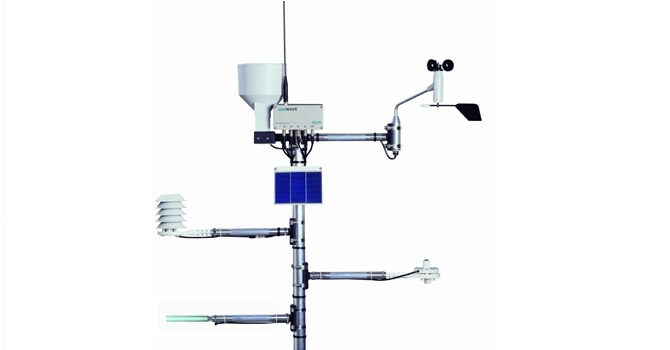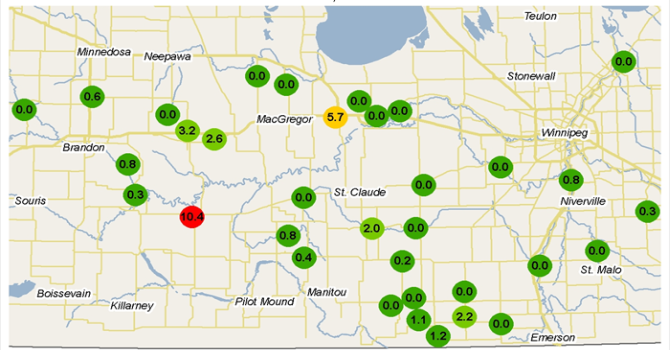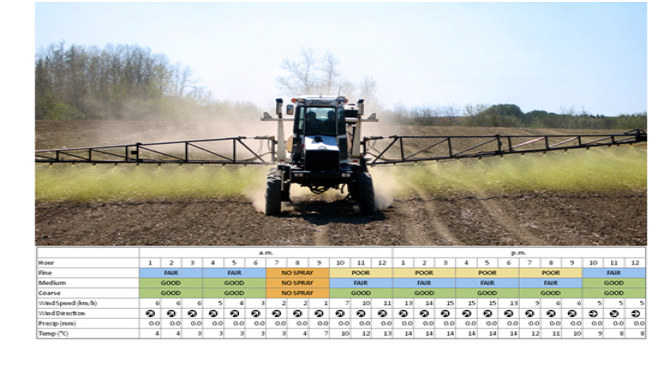Jul 2, 2013 - 2013 Disease Report # 4
By Dr. Vikram Bisht, Plant Pathologist
Potato & Horticultural Crops, Manitoba Agriculture, Foods & Rural Initiatives
With continued hot temperatures and lack of rains, the DSVs (late blight disease risk values) accumulated slowly in MB. The DSVs are accumulating more rapidly in West-Central potato growing area, but still below 18. Southern potato growing areas have not accumulated much DSVs. Coming few days are forecast to be near 30C + and risk may not be high. However, rains are being forecast from Wednesday to Saturday in some areas, which could lead to rapid accumulation of late blight risk.
In some fields sprout emergence may be affected by Rhizoctonia disease, if seed treatment for the disease was not used. This could lead to black scurf disease in tubers at harvest.
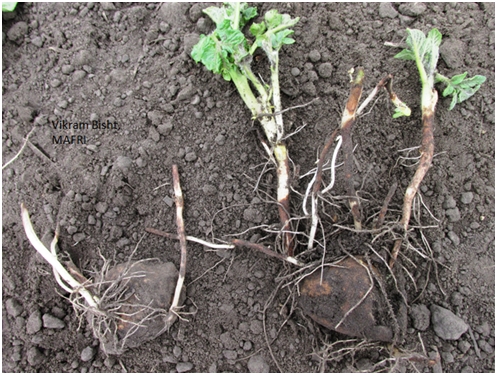
Photo 1. Rhizoctonia infection on emerging sprouts.
In some fields there are symptoms on plants which resemble herbicide injury and could be confused with mosaic virus diseased plants in the same field (Photo 2 & 3). When put against a strong light, mosaic pattern of light and dark green can be seen in a virus infected leaf. Crinkled or malformed leaves from a herbicide injury do not show such a mosaic pattern.
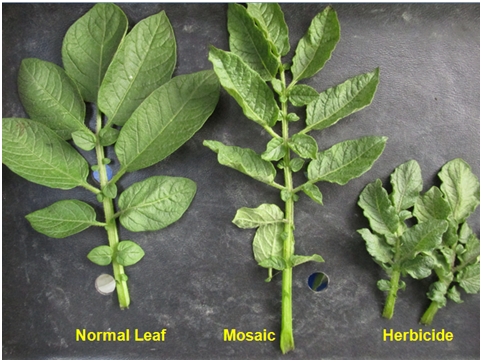
Photo 2. Leaves showing injury typical of herbicide affected seed and mosaic virus infected plant. Healthy leaf on the left has flat fully expanded leaves, compared to yellowing and crinkling in virus infected and crinkled herbicide affected.

Photo 3. Potato Mosaic infected plant showing typical mosaic pattern against light. No such mosaic is seen in healthy leaf.
US reports: In the US the blight appears to be mainly in the Eastern US, with a new report from New Jersey on potato in the last few days. But with report this week from a County in Central Wisconsin, late blight has moved closer.



